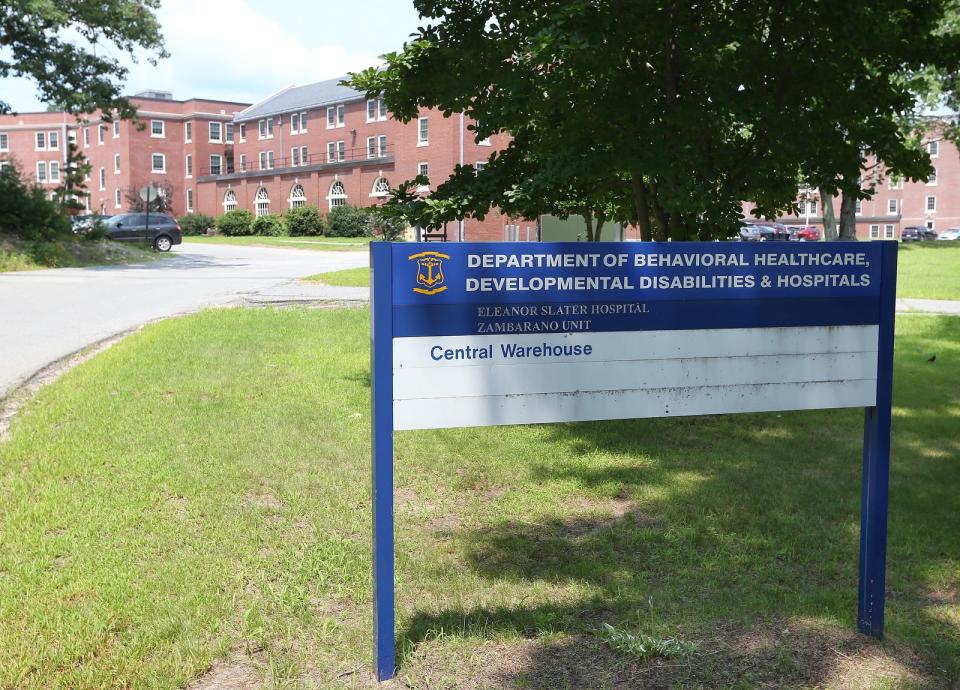Effort to move families from Cranston Armory to Zambarano cottages clears hurdle, but concerns remain
PROVIDENCE — The state's housing secretary won approval Tuesday morning to begin negotiations to move up to 10 families experiencing homelessness into vacant cottages on the state hospital campus in Burrillville, but the senator who represents Burrillville is concerned.
In an interview given after the State Properties Committee gave its unanimous approval to negotiations with Tri-County Community Action Agency to operate this piece in the state's multipart homeless-relocation plan, Sen. Jessica de la Cruz voiced concerns about the lack of basic information.
A Republican whose district stretches over Burrillville, Glocester and North Smithfield, de la Cruz said she is concerned about both the Zambarano Hospital population and the unhoused population, and not yet clear about the basics, like access to transportation for unhoused people moved to this rural part of the state, and the safety of the hospital staff and patients, who have privileges that allow them to roam the grounds, the garden and the lake.
"Are we talking family units or are we talking individuals? ... [Will there be] wrap-around services?" she asked.
Noting the cottages have no kitchens, she also questioned how the families would eat, and noted the long-running fire code compliance problems in the hospital kitchen, which the state nevertheless relied on to provide food when the cottages were last used during the COVID pandemic for isolation and quarantine.
"Will it hurt or ... affect the patients at Zambarano? That is my number one concern as the senator for Burrillville," she said.
More about the plan: State has new plan for 10 homeless families – here's where they would go

How is the state responding?
State Housing Secretary Stefan Pryor said the answer to each one of these questions is subject to further talks with the agency that runs the Zambarano Hospital — the Department of Behavioral Healthcare, Developmental Disabilities & Hospitals — and Tri-County Community Action, which submitted a letter of interest in providing services at this site.
As for the transportation issue, he said those families that "self-select" to move to the rural hospital campus − from the soon-to-close Cranston Street Armory or some other emergency shelter − may very well be those that have vehicles "for whom this is really an ideal scenario."
"Even if that does not turn out to be the case, Tri Counter Community Action Agency is considering transportation options. That's a preliminary discussion, but they're considering it."
Gregory Schultz, the attorney general's representative on the State Properties Committee, asked Pryor why he was bringing this and other requests to the committee on short notice in a disjointed and "ad hoc" fashion.
More: What happens to those seeking shelter when Cranston Street Armory closes? What we know
Pryor − who was confirmed in March as the second director in little more than a year of the state's new Department of Housing − said "we did come to you (earlier) with a more comprehensive explanation" of the administration's next steps in finding alternatives for those essentially living at the Armory to go when it closes, and received "pre-authorization to do what we are doing."
"What you are witnessing is, on a sequential basis, precisely as predicted and requested. We are bringing you items when they are ready for consideration," he said.
What is the plan for when the Cranston Street Armory closes?
The closing date for the Armory shelter is currently set for May 15, after being extended more than once, and Pryor said the state is looking at other possible locations for the 150 or so people currently at the Armory, including a portion of the soon to close Charlesgate nursing home in Providence.
"One of the things that we're aiming to accomplish is providing a variety of options to families and individuals experiencing homelessness in Rhode Island as we ramp down the armory where 150 to 200 individuals were residing on [any] given evening."
"We're aiming to open up smaller facilities in a variety of locations that would enable homeless individuals and families to make choices and also would allow for even more manageable scenarios."
Cottages need 'minor' repairs, timeline unknown for moving families in
It is not yet clear when the cottages on the Zambarano campus were built, or for what purpose. But Department of Housing spokesman Joseph Lindstrom said the three cottages were last used for quarantine and isolation during the pandemic. Before that, he said, the cottages were used by Phoenix House for substance-abuse recovery, specifically for adolescents and teens.
Pryor said it is clear from recent inspections that the cottages need some "minor" repairs and that it is not known whether it will be "weeks or months" before they will be ready for families to move in, or how much it will cost to make them inhabitable.
Asked over the weekend where BHDDH Director Richard Charest stands on the plan, spokesman Randal Edgar said: "Director Charest supports this idea."
"Looking forward, BHDDH plans to use these buildings as Enhanced Mental Health Psychiatric Rehabilitative Residences, which serve adults who need 24-hour supervision and support but do not require hospital level of care, but that is at least a year away."
In the interim, "BHDDH's priority is maintaining a safe and secure facility," Edgar said.
This article originally appeared on The Providence Journal: Plan to move homeless RI families to state hospital clears hurdle but concerns grow

